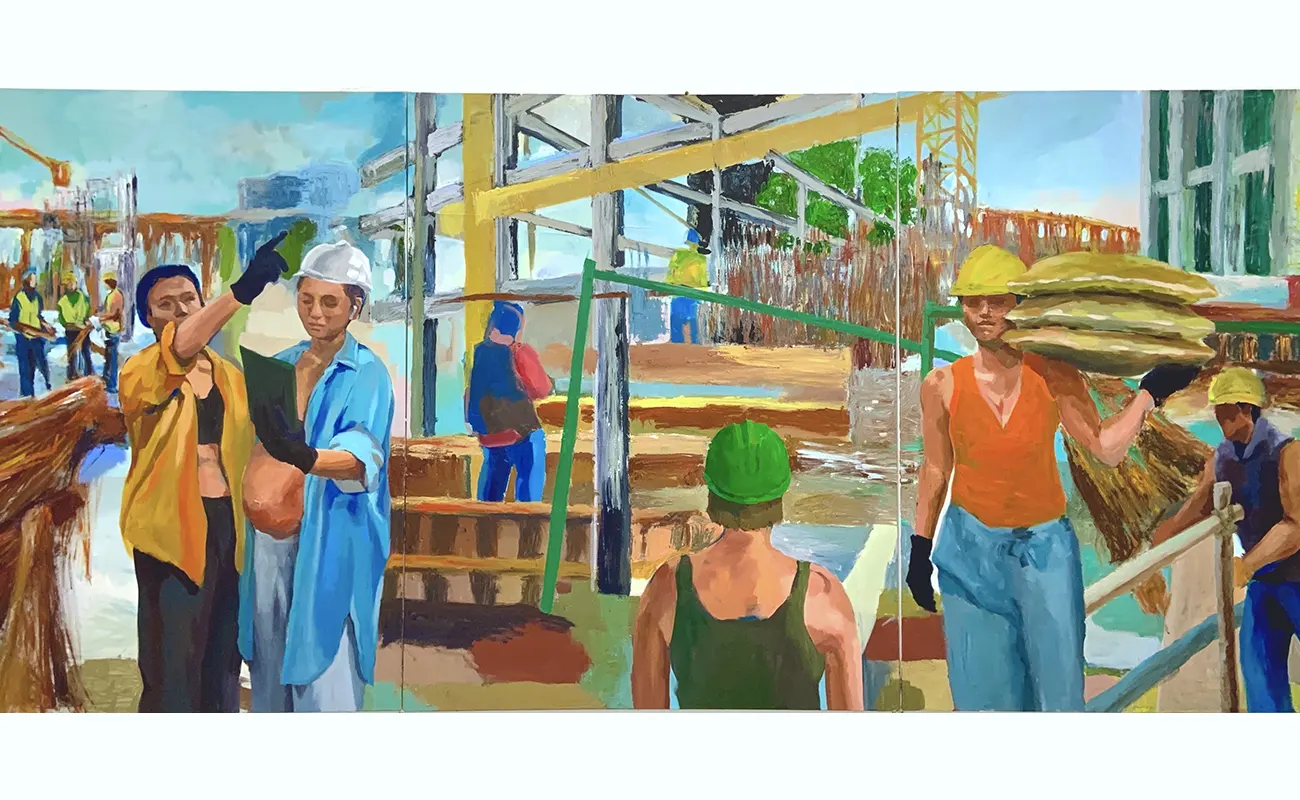“While you can always re-gesso a painted canvas, it can never be as fresh as an unprimed one.”
Emergence of a Voice: Xiaorui Huang’s Artistic Journey
In the bustling artistic hub of New York, Xiaorui Huang distinguishes herself as a potent advocate for social commentary and human rights, particularly championing women’s rights and the rights of disabled children. Born and nurtured in China, Huang’s initiation into the world of art began at the tender age of 10 with her maiden still-life study. A few years later, she ventured to Ipswich, England, immersing herself in the study of Fine Art at St Joseph’s College and subsequently completing her A-level studies.
Pursuing higher education, Huang further honed her craft by obtaining an MFA from Brooklyn College of the City University of New York. Since Fall 2023, she has shared her insights and expertise as an adjunct assistant professor at CUNY. The artist was fortunate to find a mentor in Thaddeus Radell, a renowned American postwar and contemporary artist celebrated for his abstract figure compositions. Under Radell’s guidance, Huang navigated her early explorations in the art world, gaining valuable knowledge on painting techniques, colors, pigments, and materials.

Canvas of Equality: Influences and Themes in Xiaorui Huang
Xiaorui Huang’s creations are deeply influenced by the environment of her upbringing, especially her emphasis on advocating for women’s rights. During the 2000s, the artist observed how the patriarchal mindset, prevalent in most Chinese families including her own, led to skewed social treatment. Her experiences as a freelance construction worker, where her former athlete’s strength rivaled that of her male counterparts, inspired creations such as “Construction Women Worker,” symbolizing her stance on gender equality.
Her artistry also delves into the broader spectrum of human rights and fairness. Xiaorui ardently believes that every child, metaphorically akin to a blank canvas, merits unbiased treatment. Focusing on the rights of children, especially those with disabilities, her work poignantly illustrates how societal behavior can leave lasting, indelible marks on these young lives. Through her pieces, Huang urges for an equitable approach towards all disadvantaged groups, echoing her beliefs in the universal principles of justice and equality.

Bridging Worlds: “Disability Child with Society Emotions” and Xiaorui Huang Techniques
“Disability Child with Society Emotions” (2021) holds a special place in Xiaorui Huang’s repertoire, exploring societal impact on children with disabilities. This collaborative piece with performance artist Kilusan Tagle Bautista is a powerful visual commentary. During the performance, Bautista splashed paint on Huang, symbolizing societal emotions, while she assumed the role of a disabled child. This confluence of performance and visual art speaks volumes about the artist’s innovative approach to storytelling and advocacy.
In crafting her visual narratives, Huang frequently melds acrylic paints with oil pastels, weaving in materials such as newspaper clippings and children’s drawings onto a stretched white canvas. Her technique is distinctive; she applies paint not just with traditional tools but also with her fingers. This integration of different mediums underscores the depth and intensity of Xiaorui’s creations, making them both striking and emotionally resonant.

Empowering Young Minds: Huang’s Aspirations and Collaborations
Xiaorui Huang harbors a desire to collaborate with children in creating large paintings, ensuring an enriching experience for the young minds. She recalls a previous collaboration with an autistic child inspired by Immanuel Kant’s “Critique of Pure Reason,” aiming to underscore the challenges faced by children and simultaneously highlighting their potential. Such initiatives stand testament to Huang’s commitment to using art as a medium of empowerment.
Currently, Huang is immersing herself in a series centered around children, while also teaching creative art part-time to youngsters aged 4-12. Her practice involves integrating their drawings into her portraits, featuring her autistic nephew and niece as protagonists. Through such endeavours, the artist is not just a creator but also a facilitator, helping children find their voice and express their perspectives through the canvas.






